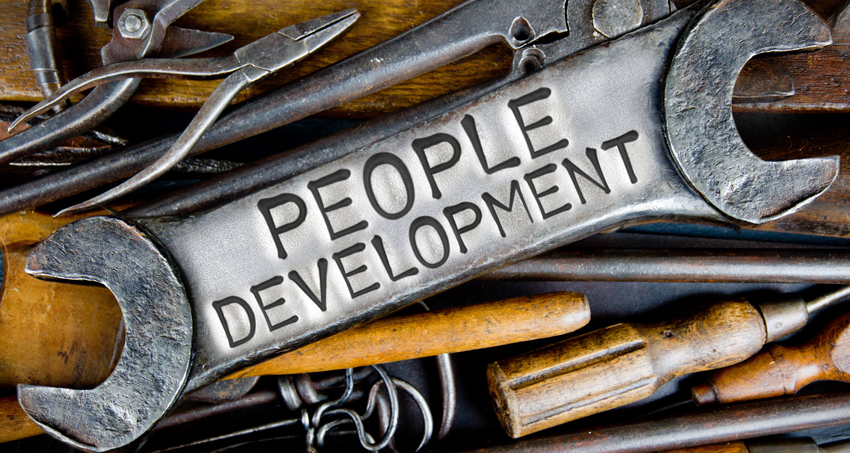As the name implies, continuous people development is about embarking on a journey of never-ending personal and professional improvement. The approach I’m sharing today is a perpetual cycle of four key phases: seeking feedback, planning development, increasing knowledge and skills, and implementation for improved results. This is a cycle that revolves around the individual’s and organization’s core values and is most effective when it follows the fundamental practice of being employee-driven, leader-guided.
Phase 1: Seeking Feedback
Seeking feedback is the most productive way to gain insights that will reduce the inevitable blind spots we all have. (See the Johari window model by Joseph Luft and Harrington Ingham.) The broadest and richest source of feedback comes from a combination of personal introspection and input from the individual’s external stakeholders. I suggest starting with a personal SWOT (Strengths, Weaknesses, Opportunities and Threats) analysis, followed by candid one-on-one interviews with each of these stakeholders. The interviews are the best source of feedback and a reinforcement to the relationship. If the relationship between the individual and their stakeholders has not developed to that level of trust and openness, then a multi-rater survey will do. With this feedback, the individual is now prepared to engage the guidance of his/her leader in the next phase.
Phase 2: Planning My Development
Like any journey, planning personal and professional development requires a clear understanding of two key points: the origin and the destination. A full understanding of where we are in the moment is found in phase one. Once the origin is defined, the destination or desired outcome needs to be understood and articulated. As stated in “The Seven Habits of Highly Effective People” by Stephen Covey, “Begin with the end in mind.” With these two points defined, the individual can now complete a gap analysis with their leader of what stands between their current state and the destination. They can then develop a plan to close the gap. Often the plan will need to include an increase in specific knowledge and skills.
Phase 3: Increasing Knowledge and Skills
This phase is most effectively engaged when the individual works in harmony with a few basic principles of human learning and development. First, most humans learn more through experience and coaching than formal structured learning. It is estimated that the ratio is somewhere around 70% experiential, 20% coaching/mentoring and 10% structured learning. These are not exact and depend on factors such as the learning style of the individual and the knowledge or skill that is being acquired. However, generally speaking, there is a great benefit to the individual who taps into the insights of others and learns from his/her own application and struggles. Second, if humans don’t use it they lose it. Retention comes from spaced repetition. In most cases, whether it’s knowledge to be gained or a skill to be developed, quality daily review and practice are important. As goes the saying, practice makes perfect.
Phase 4: Implementation for Improved Results
Improved results require implementation. You might say that this is common sense, but as my father told me, “Common sense isn’t necessarily common practice.” The key to moving beyond potential analysis paralysis is found in the disciplines of execution, as developed in “The 4 Disciplines of Execution” by McChesney, Covey and Huling.
In summary, these are the four disciplines: 1) Focus on the wildly important and don’t try to do it all; it’s impossible. 2) Act on the lead measures by working towards steps and milestones. 3) Keep a compelling scoreboard. Even the best need to know the score throughout the game. 4) Create a cadence of personal and shared accountability. While not one of the specified disciplines, a mentor or accountability partner can be a helpful addition to a leader’s guidance.
Once the individual has come full circle through the continuous development cycle, they should see improved results. This is best verified by starting the cycle over again. Transparency of the process through all four phases is critical to keeping committed.
Continuous People Development is at the center of our culture at England Logistics. How do you facilitate continuous development in your life and organization?
– Wayne Davis, VP of Talent Development
###
As a Talent Management/HR executive with over 20 years of talent and human resource management experience, I strive to deliver value generating services to internal and external clients. This has provided me with the ability to lead or influence people in developing solutions to achieve higher levels of measurable success. My professional interests are targeted toward helping clients achieve their optimum performance through people solutions.



